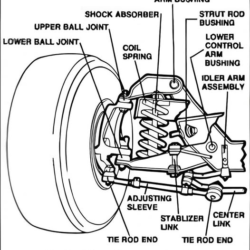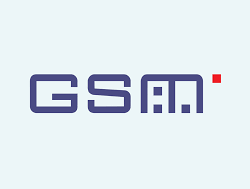DNSSEC, short for Domain Name System Security Extensions, is an advanced set of security protocols designed to add an essential layer of trust and authenticity to the Domain Name System (DNS). DNSSEC addresses long-standing security gaps in DNS by using cryptographic methods to prevent unauthorized alterations and redirection of DNS data, helping ensure users can access genuine, intended websites without interference.
Understanding DNS: Basics and Functions
DNS is the backbone of the internet’s functionality, translating user-friendly domain names, such as example.com, into IP addresses like 192.0.2.1 that computers use for identification. When users type in a web address, DNS servers work in the background to retrieve the associated IP, allowing seamless access to web content. This translation system has earned DNS the reputation as the “phone book of the internet.”
However, traditional DNS has notable vulnerabilities. Attackers can exploit these, manipulating DNS data to redirect users to malicious sites or intercept their connections, making DNS security an urgent priority.

What is DNSSEC?
DNSSEC was developed as an extension to the traditional DNS protocol to combat vulnerabilities like DNS spoofing and cache poisoning. DNSSEC strengthens the DNS query and response process by verifying the authenticity of data through cryptographic signatures. If the DNS response isn’t verified, the user can be warned or even blocked from reaching a potentially harmful site.
Key Features and Protocols of DNSSEC
DNSSEC secures DNS by introducing cryptographic authentication and integrity. By leveraging digital signatures, DNSSEC can confirm that the data returned by a DNS query has not been altered. This authentication process uses a hierarchy of trust within the DNS architecture, from root-level servers to individual domain servers.
Benefits of DNSSEC
- Protects Against Cache Poisoning: Prevents malicious actors from altering cached DNS responses to redirect users to fake sites.
- Improves Website Trustworthiness: By securing DNS information, DNSSEC builds user trust, essential for e-commerce and secure online communications.
- Prevents Man-in-the-Middle Attacks: Ensures that DNS data isn’t tampered with during transmission, safeguarding against interception and alteration.
- Reduces Phishing Risks: Provides added security against phishing schemes that rely on DNS vulnerabilities.
How DNSSEC Works: Step-by-Step
DNSSEC works through a system of cryptographic signatures and public key infrastructure:
- Public Key Infrastructure (PKI): Each DNSSEC-signed zone has a public and private key.
- Data Signing: When a DNS query is requested, DNSSEC signs the data with a private key.
- Verification: The requester (usually a browser or resolver) checks the signature with the public key.
- Secure Resolution: If the signature matches, the DNS data is validated and returned; otherwise, it’s flagged as potentially compromised.
DNSSEC Record Types
To make DNSSEC functional, several new DNS record types were introduced:
- RRSIG: Contains the digital signature associated with a DNS record set.
- DNSKEY: Stores public keys used to verify DNS responses.
- DS (Delegation Signer): Links parent and child zones, authenticating the delegation chain.
- NSEC/NSEC3: Ensures non-existent domain requests cannot be exploited in a DNS spoofing attack.
Public Key Cryptography in DNSSEC
DNSSEC uses a pair of cryptographic keys—one public and one private. The private key signs DNS records, while the public key verifies the authenticity of these records when queried. This signing process helps recipients confirm the legitimacy of the DNS data they receive, helping users avoid fraudulent or intercepted data.
Types of Keys in DNSSEC
DNSSEC uses two types of keys:
- Zone Signing Key (ZSK): Signs DNS record sets within a zone.
- Key Signing Key (KSK): Signs the DNSKEY records to establish a chain of trust.
Each key type plays a specific role, and both are stored in DNSKEY records, making them accessible for verification by DNS resolvers.
Understanding the DS Record
The DS record, or Delegation Signer, connects a child zone with its parent, securing the DNS hierarchy. It contains crucial metadata, including:
- KeyTag: A unique identifier for the DNS key.
- Algorithm: The cryptographic algorithm used.
- DigestType: Specifies the hash function for the digest.
- Digest: A hash of the public key.
Setting Up DNSSEC for a Domain
To implement DNSSEC, domain owners must ensure that their DNS provider supports DNSSEC and follow provider-specific steps to enable it. Generally, the process involves generating DNSKEY records and configuring DS records to enable secure delegation from the domain’s parent zone.
Limitations of DNSSEC
While DNSSEC is robust in its defense against DNS-based attacks, it does not:
- Provide Data Confidentiality: DNSSEC verifies authenticity but does not encrypt the data itself.
- Protect Against DDoS Attacks: DNSSEC cannot prevent Distributed Denial of Service (DDoS) attacks that target DNS infrastructure.
DNSSEC Adoption Challenges
Despite its benefits, DNSSEC has had a slow adoption rate, mainly due to:
- Complexity: DNSSEC implementation is technical and requires proper DNS configuration.
- Cost: The process can be resource-intensive, especially for small websites.
- Compatibility: Not all systems fully support DNSSEC, creating a gap in its effectiveness.
Future of DNSSEC and DNS Security
As internet security advances, DNSSEC continues to evolve, with ongoing research exploring ways to strengthen its cryptographic protocols and improve its compatibility across different systems. New security protocols that address DNS confidentiality are emerging to enhance DNSSEC’s effectiveness.
Frequently Asked Questions (FAQs)
What is the main purpose of DNSSEC? DNSSEC aims to secure DNS by verifying the authenticity of DNS responses.
How does DNSSEC differ from traditional DNS? Traditional DNS lacks verification, while DNSSEC ensures responses are authentic through cryptographic signatures.
Does DNSSEC provide data encryption? No, DNSSEC does not encrypt data; it only provides authentication.
What are RRSIG and DNSKEY records? RRSIG holds the signature for DNS data, while DNSKEY contains public keys used for verification.
How can I check if my domain uses DNSSEC? Most DNS management tools allow you to view DNSSEC records, or you can use online tools to check.
Is DNSSEC effective against DDoS attacks? No, DNSSEC does not prevent DDoS attacks but helps prevent DNS spoofing and cache poisoning.


















